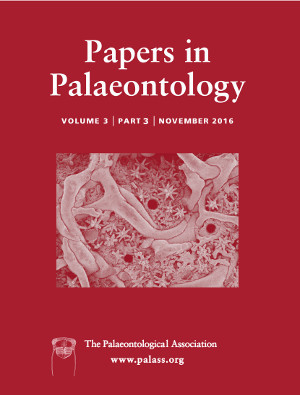Reg. Charity No. 1168330

The fossil record of non-mammaliaform probainognathian cynodonts is outstanding in the Late Triassic rocks of Brazil and Argentina. Approximately 15 genera are known, providing unique insights in the study of the major skeletal transformations prior to the mammalian condition. Globally, the diversity of probainognathians is possibly under-represented, as the discovery of small- to very small-sized taxa based on relatively well-preserved specimens is rare. Several species, for example much of the Laurasian record, are based on isolated teeth and jaw fragments. Here, we describe a new probainognathian from the Late Carnian Hyperodapedon Assemblage Zone of the Santa Maria Formation, south Brazil. Alemoatherium huebneri gen. et sp. nov. is based on a left lower jaw with almost complete dentition that exhibits a combination of features not seen in any other known probainognathian. Its slender lower jaw, anterodorsally bent process of the dentary, high number of lower incisors, reduced canine, triconodont-like postcanine teeth with mesiolingual and distolingual cingular cusps are all features that support the inclusion of A. huebneri as a member of the Prozostrodontia clade. This new find highlights the conspicuous probainognathian cynodont fossil record in southern Brazil, with a plethora of forms near the mammalian origin.